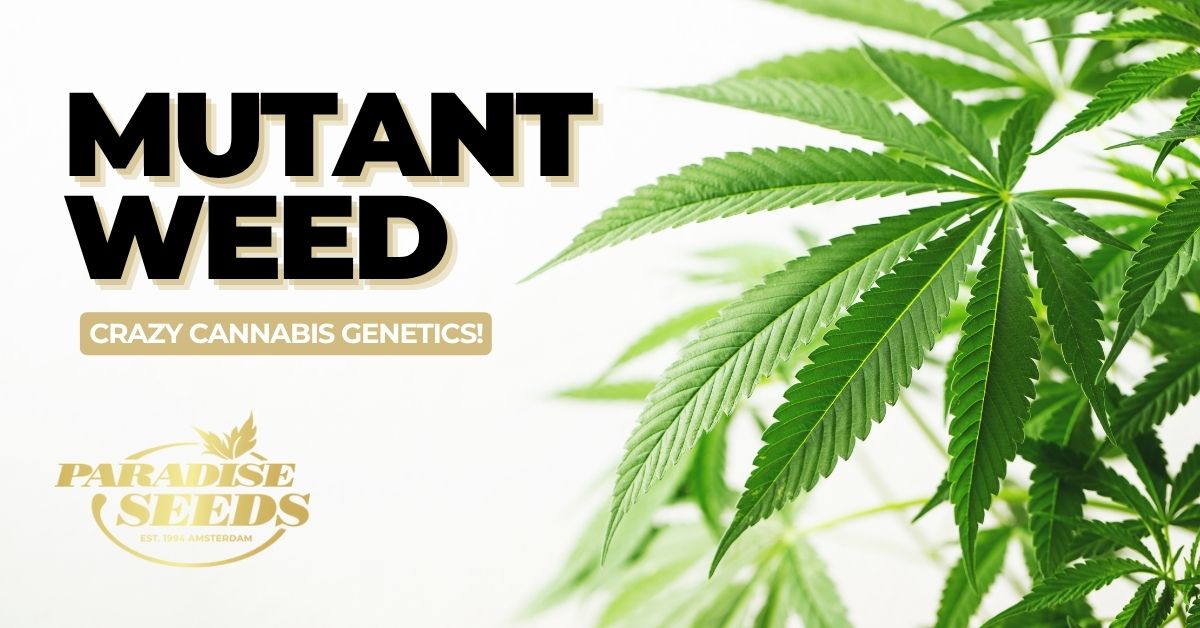Contents
Mutant weed used to be a reason to be concerned, but as cannabis knowledge develops, plants that act and behave differently due to genetic mutations are proving to be an interesting topic for some growers to exdplore in more depth.
In cannabis plants, like all living organisms, genetic mutations inevitably occur naturally. While the term might sound alarming, cannabis mutations are mostly genetic quirks that are harmless, and these quirks have often fuelled the breeding process.
What are genetic cannabis mutations?
In simple terms, a mutation is a change in a plant’s DNA. These genetic tweaks can happen naturally or be triggered by environmental stress, chemicals, or even deliberate breeding experiments. It’s important to distinguish between:
Cannabis mutation as mentioned already, is a permanent alteration in the DNA sequence – which may or may not lead to visible changes.
Cannabis trait: This can often be a survival mechanism that responds to environmental changes – a good example of this is hermaphroditism in weed plants.
Common cannabis mutations which produce mutant weed plants
Mutations occur in all types of plants, but they’re particularly noticeable in cannabis due to its distinct leaf shapes and bud formations. Certain mutations cause them to develop in unexpected ways. Here are some of the most notable genetic oddities found in cannabis, creating mutant weed formations:
Whorled phyllotaxy
In most cannabis plants, two leaves grow from each node in an alternating pattern. However, some plants develop a rare mutation known as whorled phyllotaxy, where three or more leaves grow from a single node. This can create a bushier appearance and, in some cases, increase yields due to the extra foliage. However, it doesn’t always guarantee higher bud production, as the plant’s energy distribution can be unpredictable.
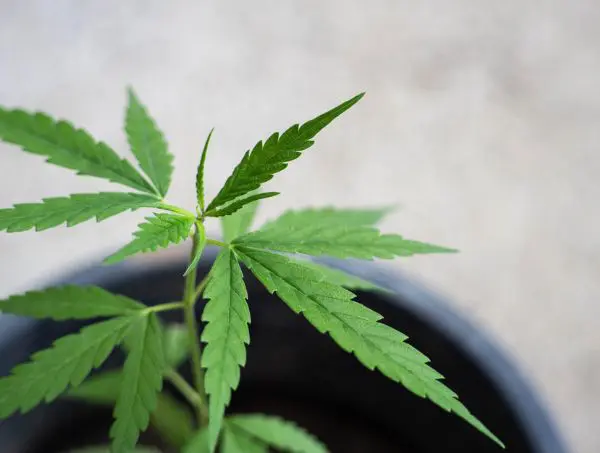
Ducksfoot Leaves
One of the most recognizable cannabis mutations is the Ducksfoot variety, named for its distinctive, webbed leaves. Unlike the classic serrated cannabis leaf, Ducksfoot plants have broad, fused leaflets, making them look more like wild plants.
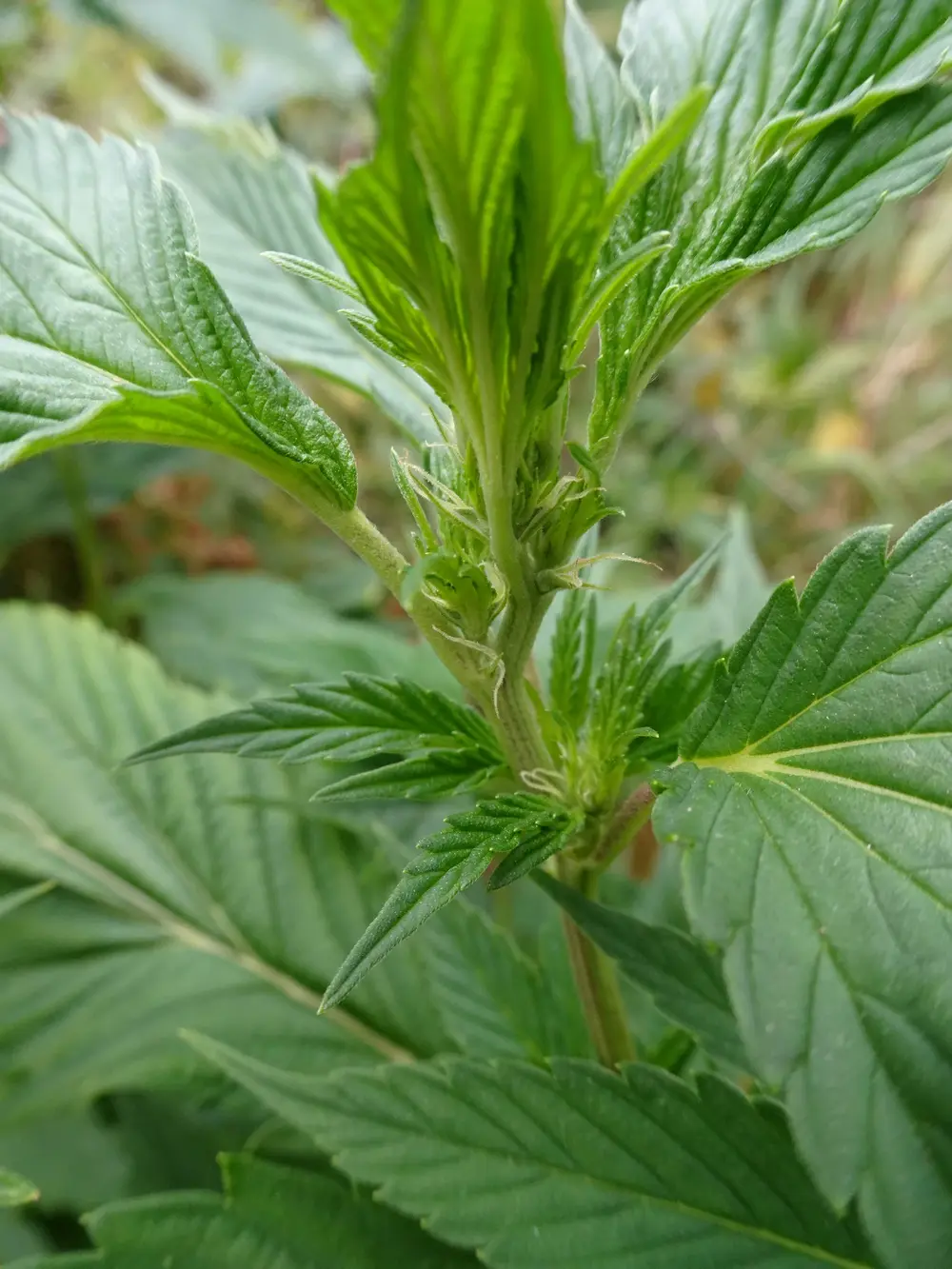
Rare cannabis mutations
Albino and Variegated Cannabis
Occasionally, cannabis plants develop albino or variegated traits, where parts of the plant lack chlorophyll. Albino plants are entirely white, while variegated plants have patches of white or yellow mixed with green.
These mutations will probably weaken the plant, as they reduce its ability to photosynthesize. Growing an Albino cannabis plant is a rarity (at Paradise we have seen a very few specimens over our many years) and while it be a novelty plant to have in your grow it will produce lower yields than its non-Albino sibling.
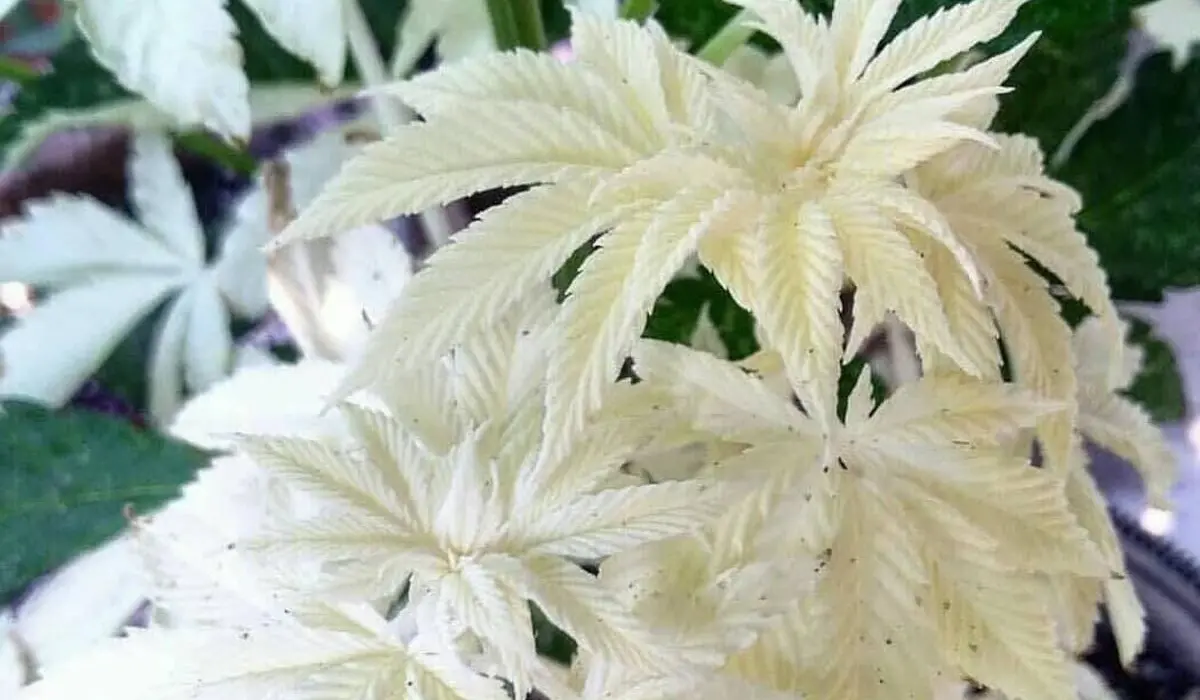
Polyploidy
When a cannabis plant develops extra sets of chromosomes, this rare condition is known as polyploidy. In theory, this can lead to larger plants with bigger buds and potentially higher THC or CBD content.

Fasciation
Fasciation is an abnormal growth pattern where the plant’s stems or flowers flatten and widen, creating a ribbon-like appearance. This mutation can cause buds to form in unusual shapes, often looking like multiple buds fused together.
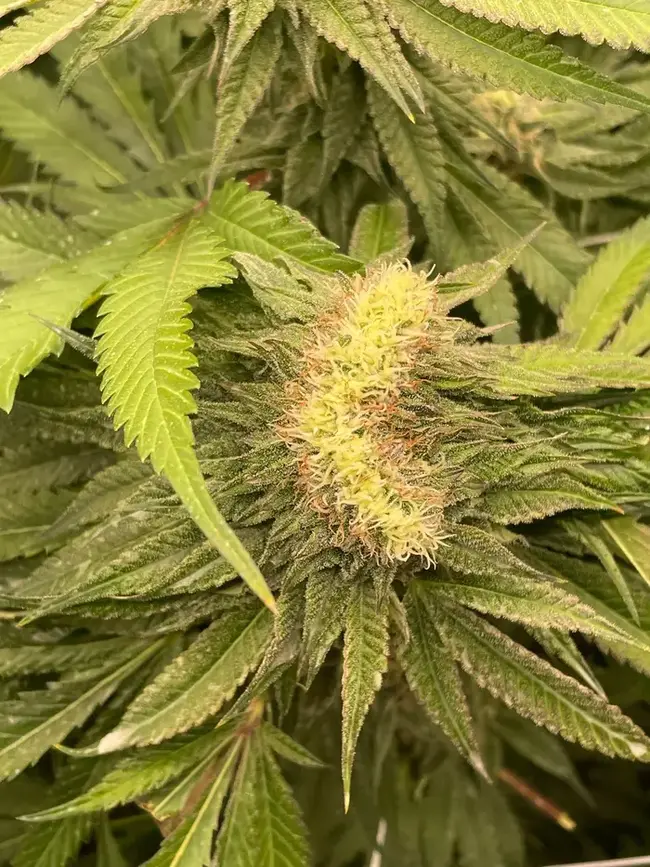
Cannabis mutations: What’s good and what’s bad?
Mutations can influence a cannabis plant’s appearance – leading to mutant weed headlines! – growth patterns, and, occasionally, its cannabinoid and terpene profile.
However, not all mutations are desirable. While a mutation like polyploidy can result in improved buds, some can lead to weaker plants with reduced yields or lower potency.
The answer depends on the mutation.
- Desirable mutations, such as whorled phyllotaxy or unique leaf patterns, are worth keeping and observing. These traits might enhance the plant’s appearance or make it a conversation starter.
- Harmful mutations, such as weak stems or poor bud production, are best removed to avoid wasting time and resources.
Some growers actively seek out mutant plants for breeding experiments. By stabilizing certain mutations, breeders can create entirely new strains with distinct visual or chemical properties.
How cannabis breeding harnesses mutations
Cannabis mutations offer cannabis breeders an opportunity to develop plants with novel characteristics. These changes in a plant’s normal behaviour can be harnessed by a breeder to enhance a strain, taking it beyond the realms of a mutant weed instagram post. Examples of this include:
- Enhanced visuals: Mutant traits such as variegated leaves, purple pigmentation, or whorled phyllotaxy create visually distinctive strains. In a crowded marketplace where growers are looking to tap into the latest trend, these unique appearances help to make a strain stand out.
- Increase potency/yield: Some mutations, like polyploidy (extra sets of chromosomes), may lead to larger buds, enhanced cannabinoid production or increase the resin content of plants.
- Resilience booster: Mutations that confer resistance to pests, mold, or harsh environmental conditions can be highly desirable for outdoor cultivation.
Conclusion
While mutant weed , in the form of cannabis mutations, may seem like genetic flukes, they’re a natural part of the plant’s evolution. For practical purposes, mutations tend to be more appealing to the consumer for their curiosity and novelty value.
On the flipside, for growers, mutations can bring something new to the party, or can be the party pooper, with a notable absence of performance in potency and yield departments.



